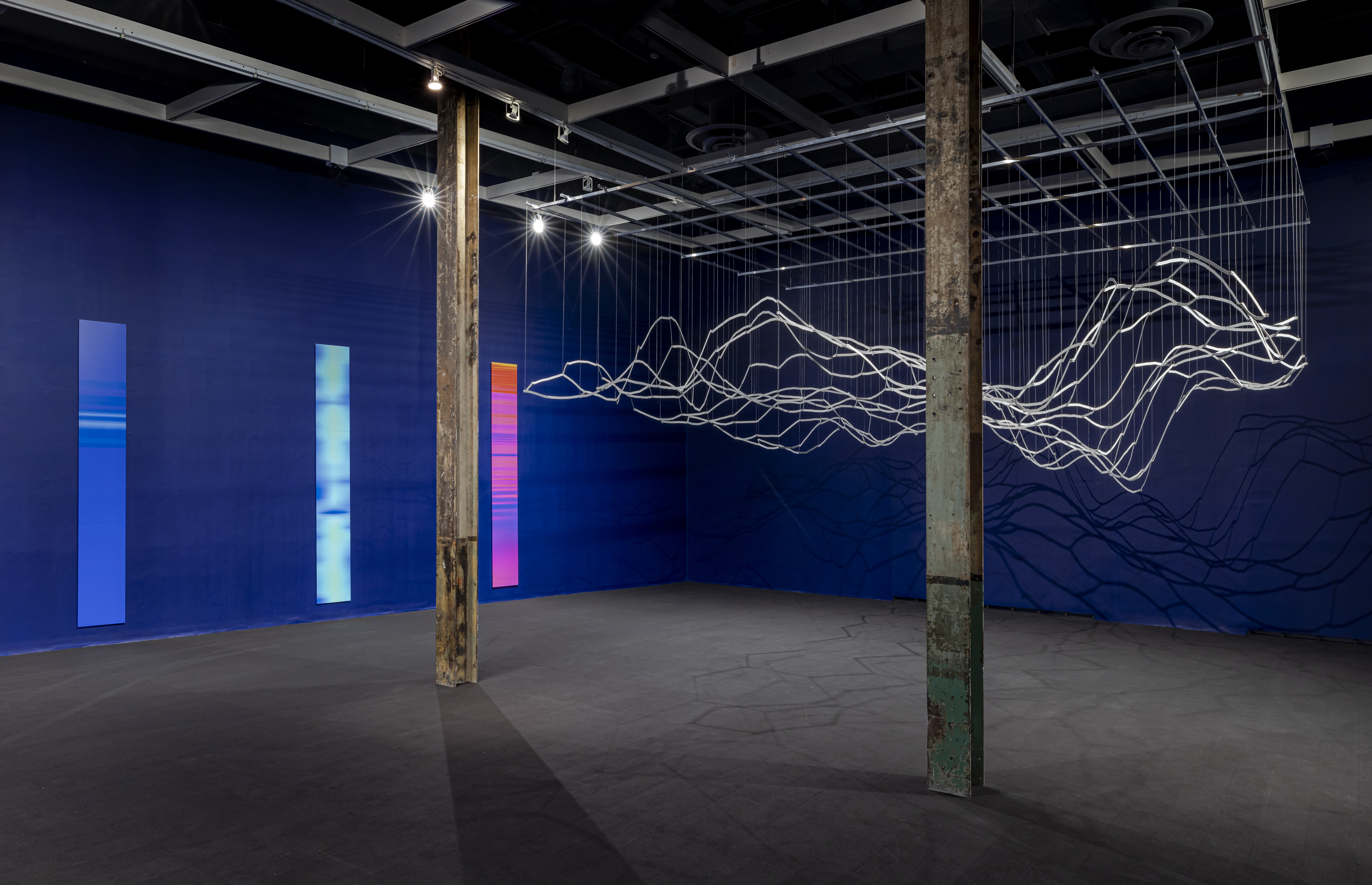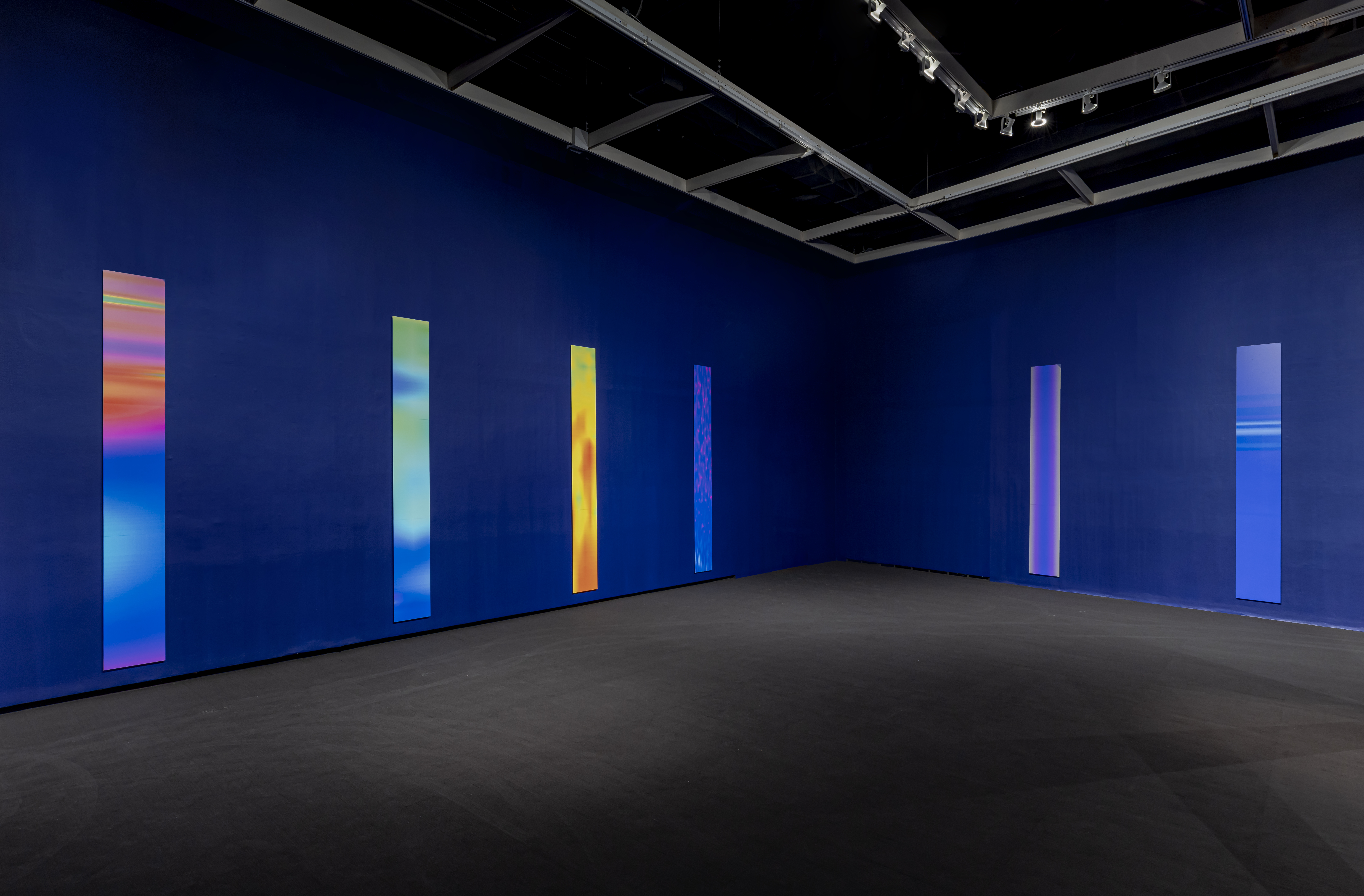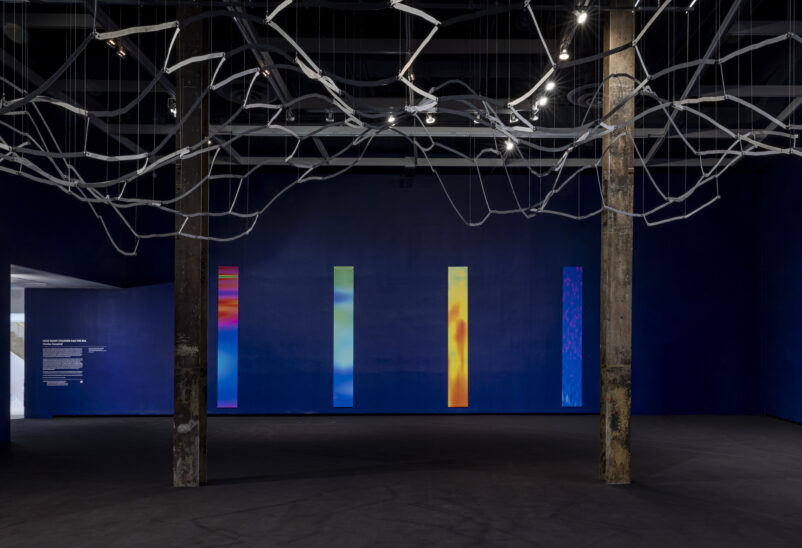September 21 – March 2, 2025
The Power Plant Art Gallery
how many colours has the sea (2024) is a commissioned work that pays tribute to the spirits lost in the Middle Passage—the harrowing journey of enslaved Africans across the Atlantic. The room-sized structure, based on bathymetric maps of the mid-Atlantic, recreates the undersea topography where the African and North American tectonic plates meet. Made from water-jet cut aluminum, it allows viewers to metaphorically walk beneath the ocean floor.
Nine monolithic panels, or “Breath Portraits”, line the dark blue walls. Visualizing the breath of members of the Black community, they represent the survivors and their descendants, standing as protective ancestral spirits. The number nine and the room’s dark blue hue and the milky white of the aluminum pay homage to Olokun, the Yoruba Orisha of the deep ocean.
The room is filled with sounds of the ocean journey, from calm to stormy seas, and hydrophone recordings of bodies entering the water. Seating invites visitors to linger, while a headphone audio work offers personal reflections on reconnecting with the lost. The work will be activated by events, including a gathering for the Black Artistic community.
Co-commissioned by the Toronto Biennial of Art and the National Gallery of Canada through the National Engagement Initiative, and co-presented with the Power Plant Contemporary Art Gallery. This presentation is made possible with the generous support of Waterfront Toronto.
The National Gallery of Canada’s National Engagement initiative is generously supported by Michael Nesbitt. L’engagement national du Musée des beaux-arts du Canada est généreusement appuyé par Michael Nesbitt.
Bio

Artist Bio
Charles Campbell
Charles Campbell (he/him) is a Jamaican-born multidisciplinary artist, writer and curator whose practice animates the future imaginaries possible in the wake of slavery and colonization. His artworks, which include sculptures, paintings, sonic installations and performances, have been exhibited widely in Canada and internationally. Recent exhibitions include Vancouver Special, Disorientations and Echo at the Vancouver art Gallery, Fragments of Epic Memory at the Art Gallery of Ontario and The Other Side of Now at the Perez Art Museum Miami. Campbell is the recipient of the 2022 VIVA Award and the 2020 City of Victoria Creative Builder Award. He holds an MA in Fine Art from Goldsmith College and a BFA from Concordia University. He currently lives and works on lək̓ʷəŋən territory, Victoria BC.
Exhibition Site

The Power Plant Art Gallery
231 Queens Quay West
Toronto ON
M5J 2B8



